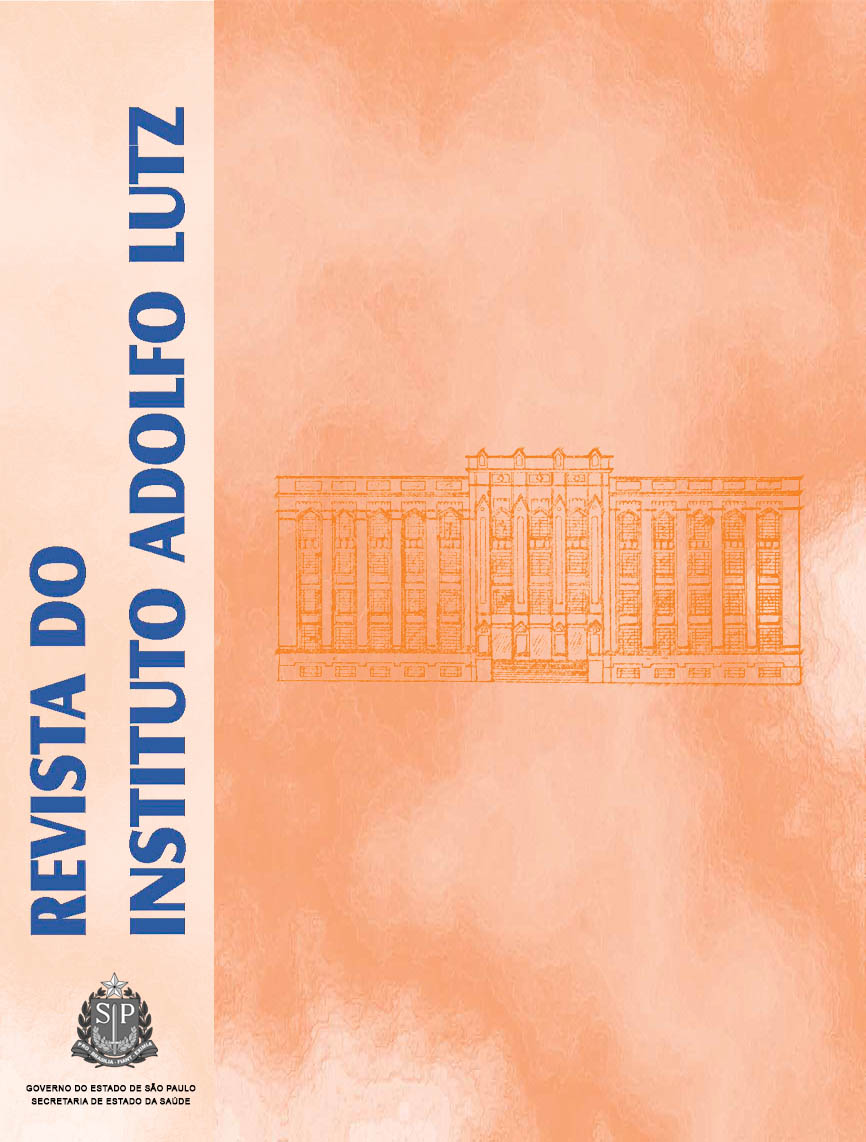Abstract
Investigation on the presence of light filth in foods is relevant topic for maintaining the physical, sanitary and nutritional quality of the product. The objective of this study was to verify the sanitary-hygienic conditions of ground cumin and black pepper marketed in cities of the state of São Paulo. Sixty-nine samples of ground black pepper and forty-seven samples of ground cumin were analyzed. These samples were purchased from markets located in São Paulo, Campinas, Riberão Preto, Santo André, São José do Rio Preto and Sorocaba, during the period between April, 1999 and May, 2000. The samples were analyzed at Instituto Adolfo Lutz in São Paulo and in São José do Rio Preto. The flotation methods described by the Association of Official Analytical Chemists (AOAC) International, 17th, 2000 were employed, performing the assays in duplicates; and the results were expressed as an arithmetic average. According to the obtained results, of 47 ground cumin samples 44 contained insect fragments, 3 were contaminated with mites, and 11 with rodent hair. Of 69 analyzed ground black pepper samples, 68 were contaminated with insect fragments, 17 contained mites, and 16 samples presented rodent hairs, in addition to other impurities. According to the RDC Resolution no 175, July 8, 2003, 11 (23.4%) cumin samples and 16 (23.2%) black pepper samples were considered inadequate for human consumption as they contained rodent hairs.
References
1. Association of Official Analytical Chemists (AOAC). Official Methods of Analysis of AOAC International. 17aed., William Horwitz (Editor), Gaithersburg, MD, 2000.
2. Brasil. Resolução RDC no 276, de 22 de setembro de 2005. ANVISA Aprova o Regulamento Técnico para Especiarias, Temperos e Molhos. Diário Oficial da União, Brasília, DF,23 de setembro 2005. Seção I, p 378.
3. Germano PML, Germano MIS. Importância e risco das especiarias. Hig Alim 1998, 12(57): 23-31.
4. Ristori CA, Pereira MA dos S, Gelli DS. O efeito da pimenta do reino preta moída frente à contaminação invitro com Salmonella Rubislaw. Rev Inst Adolfo Lutz 2002;62(2): 31-3.
5. Brasil. Lei no 8.078, de 11 de setembro de 1990. Presidência da República, Casa Civil. Dispõe sobre aproteção do consumidor e dá outras providências. Diário Oficial da União. Brasília, DF, no 176, 12 de setembro de1990. Suplemento, p. 1-12.
6. Brasil. Resolução RDC no 175, de 08 de julho de 2003. ANVISA. Aprova o Regulamento Técnico de Avaliação de Matérias Macroscópicas e Microscópicas Prejudiciais a Saúde Humana em Alimentos Embalados. Diário Oficial da República Federativa do Brasil, Brasília, DF, 2003.Disponível em: http://www.anvisa.gov.br/legis/resol/2003/rdc/175_03rdc.htm. 14 abril 2004.
7. Association of Official Analytical Chemists (AOAC). Official Methods of Analysis of AOAC International. 17aed., William Horwitz (Editor), Gaithersburg, MD, AOAC Official Method 975.49 A(a) e B(b), 2000.
8. Association of Official Analytical Chemists (AOAC). Official Methods of Analysis of AOAC International. 17aed., William Horwitz (Editor), Gaithersburg, MD, AOAC Official Method 972.40 A, 2000.
9. Food and Drug Administration (FDA). The food defect action levels: current levels for human use that present nohealth hazard. Washigton, US Department of Health andHuman Services/Public Heath Service Food and Drug Admnistration Bureau of Foods, 1982, 20p.
10. Brasil. Portaria SVS/MS no 326, de 30 de julho de 1997. Regulamenta as Condições Higiênicos-Sanitárias e de Boas Práticas de Fabricação para Estabelecimentos Produtores/Industrializadores de Alimentos. Diário Oficial da União, Brasília, DF, 1 de agosto de 1997. Seção I.
11. Wirtz RA. Food Pests as Disease Agents. In: Gorham J Red. Ecology and Management of Food – Industry Pests.(FDA Technical Bulletin Number 4) Association of Official Analytical Chemists, Arlington, Virginia, p: 469-475, 1991.
12. Vasquez AW. Hair structure and identification. In: Gorhan, JR ed. Training manual for analytical entomology in thefood industry. Washington DC, Food and Drugadministration, 1977. p: 70-76 (FDA Technical Bulletin, 2).
13. Vasquez AW. Hairs. In: Gorhan, JR ed. Principles of food analyses for filth, decomposition, and foreign matter. Washington, DC, Food and Drug Administration, 1981. p125-170 (FDA Technical Bulletin, 1).
14. Carvalho Neto C. Manual prático de biologia e controle de roedores. 2a ed. rev. ampl. São Paulo, CIBA – GEIGY; 1987.
15. Baggio D, Franzolin MR. Análise e controle dos ácaro sem alimentos e produtos armazenados. In: Encontro Nacional de Analistas de Alimentos, 1991.18p.
16. Hughes AM. Mites of stored food and houses. 2a ed.London, Min. Agric. Food, [Technical Bulletin, 2], 1976.
17. Krantz GW. Manual of acarology. 2a ed. Corvallis, Oregon State University Book Store, 1978.
18. Gecan SJ, Bandler R, Glaze LE, Atkinson JC. Microanalytical Quality of Ground and Unground Marjoram, Sage and Thyme, Ground Allspice, Black Pepper and Paprika. Journal of Food Protection 1986; 49(3): 216-221.
19. Correia M, Daros VSMG, Silva RP. Matérias estranhas em canela em pó e páprica em pó, comercializadas no Estado de São Paulo. Ciênc Tecnol Aliment. 2000;20(3): 1-10.

This work is licensed under a Creative Commons Attribution 4.0 International License.
Copyright (c) 2006 Instituto Adolfo Lutz Journal
